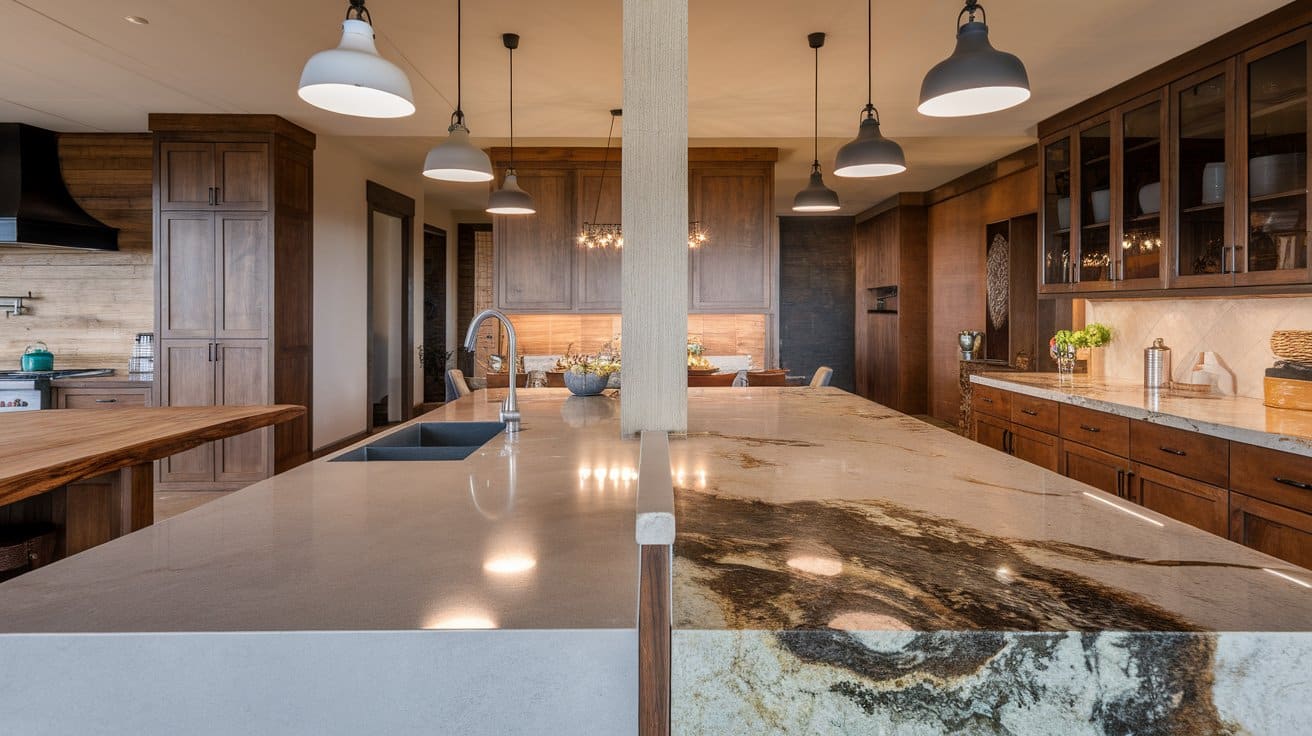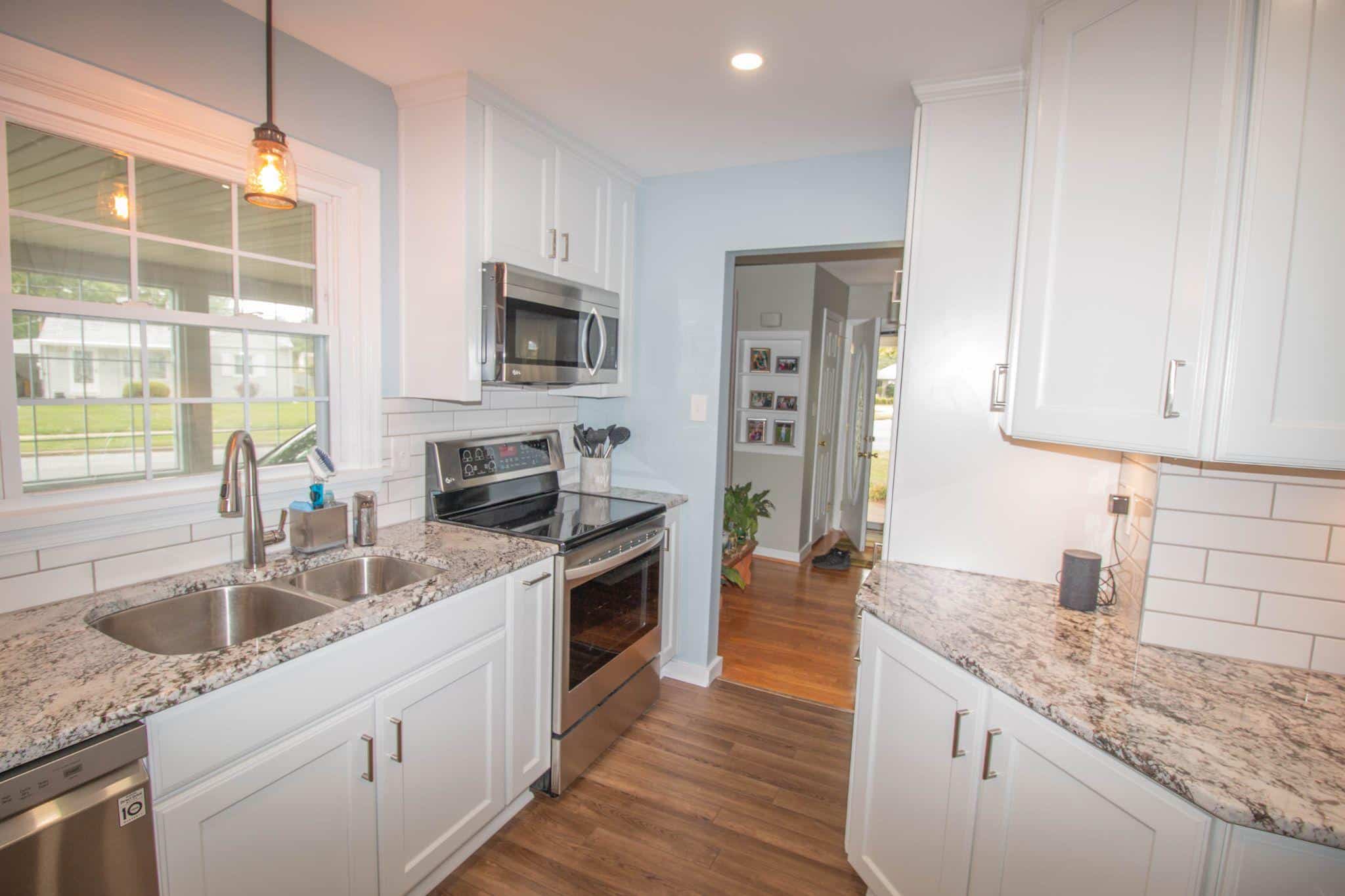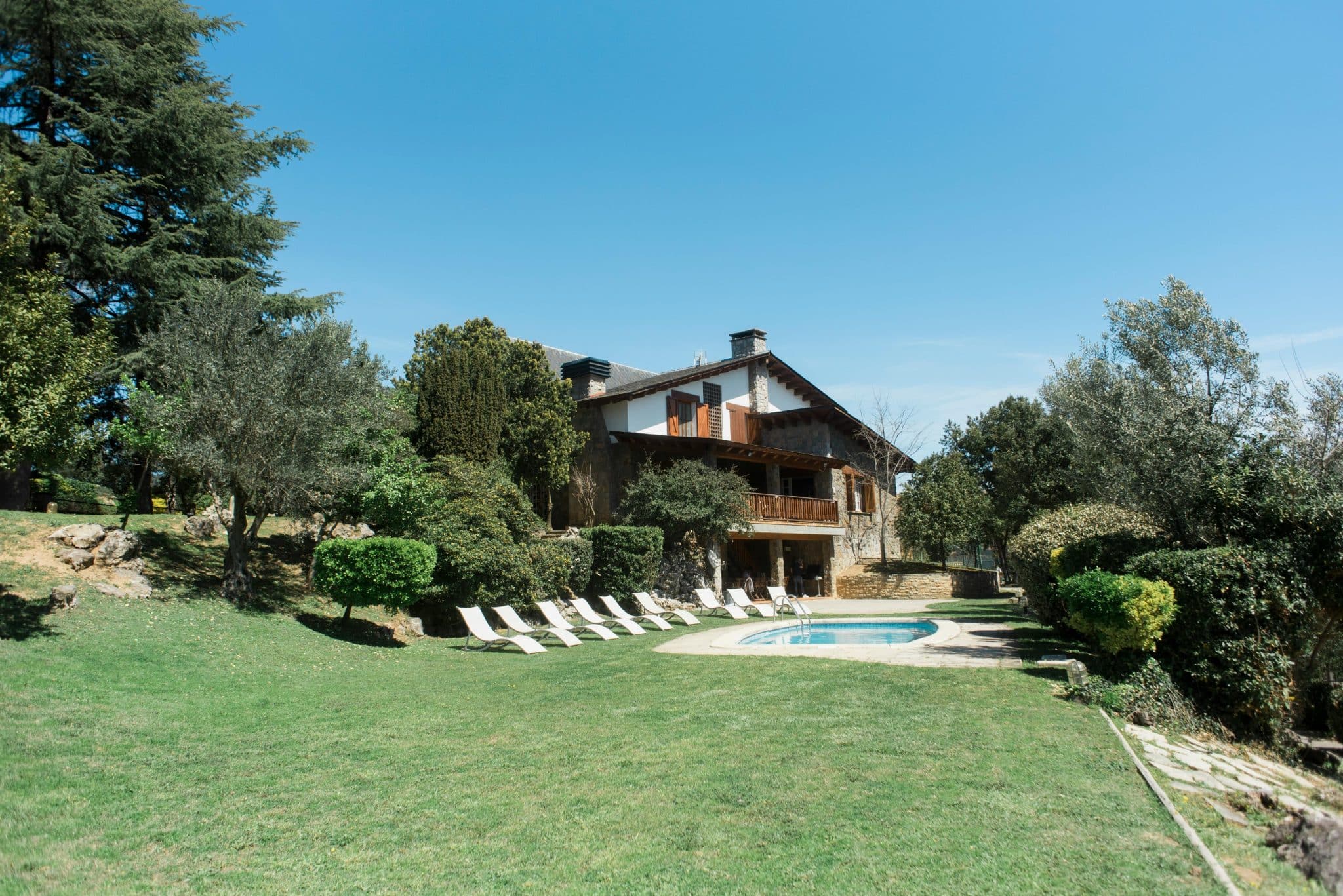Kitchen countertops define your daily cooking experience and represent one of your biggest renovation investments.
You’ve probably heard that granite and quartz are both premium choices, but one crucial difference could determine whether you love or regret your decision for the next 20 years.
I’ll show you the few key factors that separate these materials in ways most homeowners never consider.
This isn’t about surface-level comparisons; it’s about understanding which material matches your actual lifestyle, cooking habits, and maintenance tolerance.
You’ll walk away knowing exactly which countertop fits your needs, which hidden costs to expect, and which choice will make your kitchen work better for your family.
No more guessing or relying on outdated advice, just clear answers based on real homeowner experiences.
What is Quartz?
Quartz countertops are engineered stone surfaces made from crushed quartz crystals combined with resins and pigments. They contain about 90-95% natural quartz mixed with 5-10% polymer resins and color additives.
The manufacturing process involves mixing ground quartz with binding agents, then pressing under intense pressure and heat.
This allows manufacturers to produce virtually any color or pattern, including designs that mimic natural stones. The key advantage is complete control over appearance and consistency across multiple slabs.
What is Granite?
Granite represents 100% natural stone formed deep within the earth over millions of years. It forms when magma cools slowly underground, creating the distinctive crystal structure that gives granite its strength and unique beauty.
After quarrying from sites worldwide, granite undergoes cutting, polishing, and fabrication.
Natural stone countertops like granite cannot be replicated because geological processes ensure that no two slabs are ever identical. This gives each installation authentic character that can’t be manufactured.
Now that you understand the basics, let’s examine how they stack up against each other in real-world applications.
Appearance Comparison: Quartz and Granite
Granite
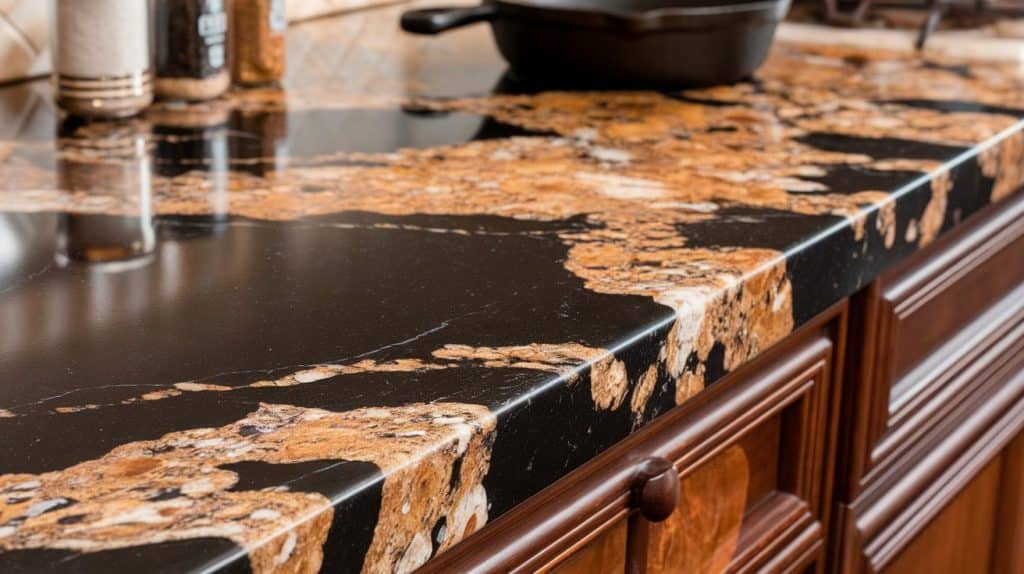
Granite comes in numerous colors and patterns due to its natural formation process. Whether you want subtle earth tones or bold mineral inclusions, there’s an extensive variety to choose from.
However, no two granite slabs are identical, which creates a unique character but can complicate matching for large installations.
The natural formation creates distinctive veining, flecks, and color variations that tell the story of millions of years of geological activity.
This authentic beauty appeals to homeowners who appreciate natural materials and want something truly one-of-a-kind.
Quartz
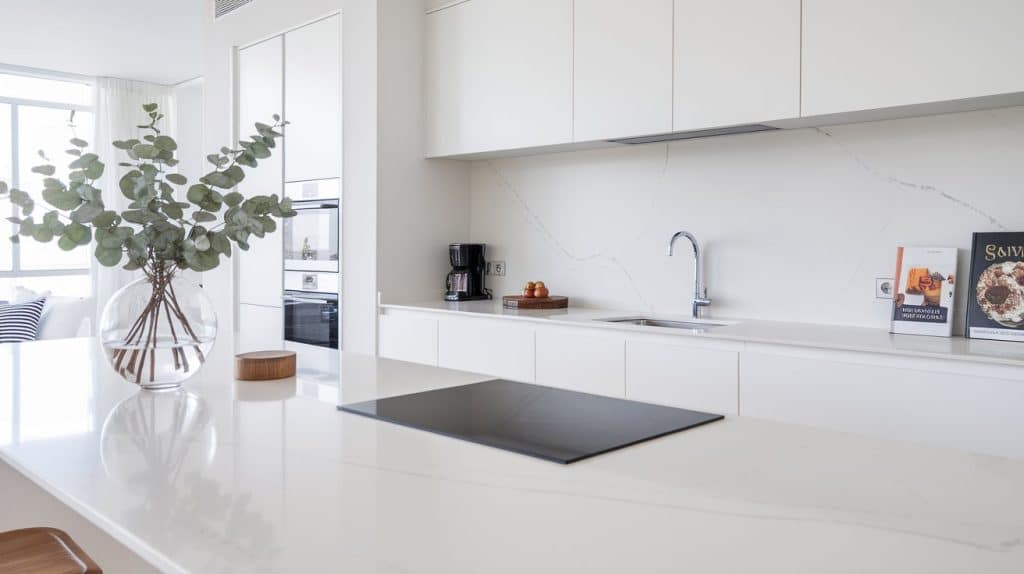
One reason quartz has gained popularity is its appearance flexibility. Quartz offers the look of natural stone while allowing complete customization of design elements.
The difference between quartz and granite colors becomes apparent when you need consistent matching – quartz provides perfect uniformity while granite shows natural variation.
With quartz, the selection process is straightforward since you can achieve exactly the look you want. Modern manufacturing can create patterns that convincingly mimic marble, granite, or entirely unique contemporary designs.
Durability and Heat Resistance in Quartz and Granite
Both materials excel in durability, but they perform differently under various conditions.
| Property | Quartz | Granite |
|---|---|---|
| Scratch Resistance | Excellent | Very Good |
| Heat Resistance | Limited (300°F) | Excellent (1,200°F) |
| Stain Resistance | Excellent | Good (when sealed) |
| Impact Resistance | Very Good | Good |
Heat Performance
Heat resistance reveals the most significant difference.
Quartz can suffer discoloration or cracking from hot cookware, requiring constant use of trivets and hot pads. Granite handles direct contact with hot pots and pans without immediate damage, though protection is still recommended.
If you frequently move between the stovetop and the counter while cooking, granite’s heat tolerance becomes a major advantage. Busy cooks who multitask will appreciate not worrying about heat damage.
Stain Resistance
Quartz’s non-porous surface means spills remain on top for easy cleanup. Wine, coffee, and cooking oils wipe away without penetrating the surface.
Granite’s porous nature can absorb liquids if not properly sealed, potentially causing permanent staining.
This difference translates to stress-free entertaining with quartz versus careful spill management with granite.
Granite vs Quartz: Maintenance Requirements
The maintenance difference significantly impacts daily life and represents where many homeowners experience unexpected challenges.
Quartz Maintenance
Daily cleaning requires only soap and water, with no special products needed. The non-porous surface naturally repels stains and bacteria, eliminating the need for sealing. Many manufacturers add antibacterial properties for enhanced food safety.
Your time investment amounts to basic daily wiping, roughly 5 minutes per week of actual maintenance.
Granite Maintenance
Daily cleaning needs pH-neutral cleaners since acidic substances can etch the surface. Immediate cleanup of spills becomes crucial to prevent staining. Professional sealing costs $100-200 annually and requires temporary kitchen disruption.
The quartz vs granite kitchen maintenance difference becomes clear after the first year. Granite demands approximately 15 minutes weekly plus annual professional service, while quartz needs only basic cleaning.
Cost Analysis of Granite Vs Quartz
Understanding true costs requires looking beyond initial material prices to long-term ownership expenses.
| Cost Factor | Quartz | Granite |
|---|---|---|
| Material + Installation | $50–$200 per sq. ft. (installed) | $80–$175 per sq. ft. (installed) |
| Installation Labor | $30–$85 per hour | $30–$85 per hour |
| DIY Suitability | Not suitable | Not suitable |
| Annual Maintenance | None required | $100–$200 for sealing |
| 10-Year Maintenance Cost | $0 | $1,000–$2,000 |
| Total Long-Term Cost | Lower overall maintenance costs | Higher due to annual sealing |
(These ranges are consistent with industry averages, though actual prices can vary by location and quality.)
Pro Tip: Get quotes that include long-term maintenance estimates to compare total cost of ownership rather than just installation prices.
Environmental Impact of Granite and Quartz
Both materials have environmental considerations worth understanding before making your choice.
Granite extraction requires quarrying operations that disturb natural landscapes, but the material is 100% natural and biodegradable. Transportation from distant quarries creates a significant carbon footprint, especially for exotic varieties.
Quartz manufacturing uses stone byproducts that might otherwise be wasted, but the process is energy-intensive and includes non-biodegradable resins. However, local production facilities can reduce transportation impact.
Both materials last 20+ years with proper care, making them more sustainable than options requiring frequent replacement. Choosing locally-sourced materials significantly reduces environmental impact for either choice.
Which Material Should You Choose?
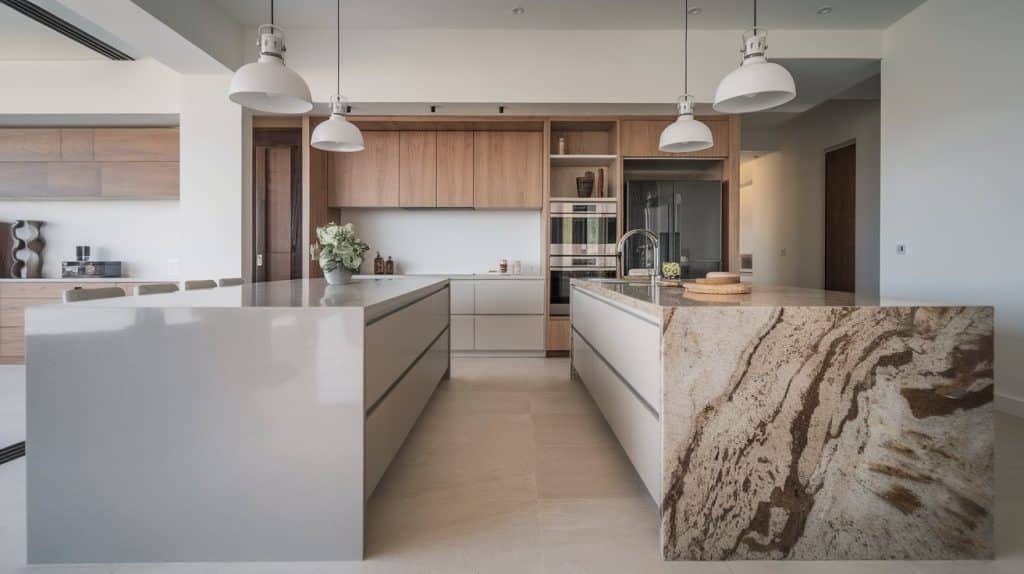
The decision depends on your specific lifestyle, cooking habits, and maintenance preferences rather than one material being universally superior.
When to Choose Quartz?
Low maintenance appeals to you – no sealing, special cleaners, or ongoing costs make quartz ideal for busy households. Consistent appearance ensures perfect matching across large installations.
Superior stain resistance handles everyday spills without stress. Wide color selection includes contemporary options that granite cannot match.
The main drawback is heat sensitivity, requiring constant awareness when cooking.
Why Choose Granite?
Natural beauty with unique patterns appeals to you. Excellent heat resistance accommodates frequent cooking without worry. Authentic natural material preference matters. Potential cost savings depending on stone selection and local availability.
The main drawback is ongoing maintenance requirements and staining potential.
Consider your cooking style when deciding. Frequent bakers benefit from granite’s heat tolerance. Busy families appreciate quartz’s simple maintenance. Wine enthusiasts might prefer quartz’s stain resistance.
Conclusion
Your countertop choice comes down to one simple question: Do you prioritize convenience or character? This decision will impact every meal you prepare for the next two decades.
Quartz wins for busy families who want beautiful surfaces without ongoing work. Zero maintenance, perfect stain resistance, and consistent appearance make daily life easier. You’ll save hundreds annually on sealing costs and hours of upkeep time.
Granite appeals to homeowners who love natural beauty and don’t mind regular care. The heat resistance suits serious cooks, while unique patterns create conversation pieces that engineered materials cannot replicate.
Neither choice is wrong, but one aligns better with how you actually live. Consider your cooking frequency, maintenance tolerance, and design preferences.
The “shocking difference” isn’t in the materials themselves – it’s in how dramatically they’ll affect your daily kitchen experience once installed.

